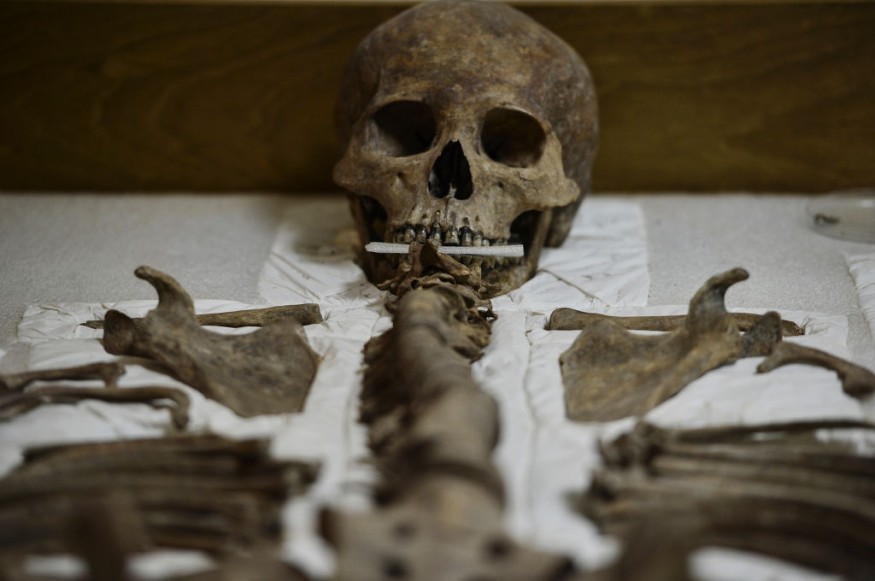Ancient Mayans used to stick gemstones, such as turquoise and jade, on their teeth. According to researchers, its purpose is more than just decoration. The sealant or adhesive they used may have some therapeutic benefits for their teeth, MailOnline reported.
An international team of researchers led by Gloria Hernández-Bolio from Cinvestav, Mexico, analyzed the sealants in eight teeth found in burial sites across the ancient Maya empire that lasted between 200 to 900 CE. They identified 150 organic molecules usually found in plant resin used for their water-repelling and glue-like properties.

Mayans Filling Their Teeth With Gems
During the pre-Classic period, the Mayans occupied the southeast portion of Mexico and Central American countries, like Guatemala, Belize, Honduras, and El Salvador. Their civilization is composed of independent states that each has a rural farming community and large urban sites where they built highly-decorated architecture.
The pyramids, palaces, and observatories were not the only things they contributed. According to the British Dental Association, the Mayans had highly developed dental skills not for personal oral health or decoration but probably for ritual or religious purposes.
Mayans carved stone inlays into the cavities of their front teeth using a round copper tube that cuts a round hole through the enamel. The stone inlay was big enough to fit a variety of beautiful minerals, like jade, cinnabar, iron pyrites, hematite, turquoise, quartz, and serpentine.
The Mexico City Museum has complete skulls with colorful inlays and all the front teeth. It appears that many of them have visited their dentist, whether they might be male or female, and rich or poor.
Incredible Sealant Help Protect Ancient Mayan Teeth
With no high-tech equipment, such as pneumatic or electric drills, the Maya cosmetic dentist only relied on hand power, Rice Dentistry reported. They used a bow drill to create the hole in the front four to six teeth on the top and bottom to make these inlays somewhat similar to porcelain veneers.
Despite the lack of anesthesia and modern technology, researchers noticed that those teeth with gems were well preserved. The inlays have lasted a lifetime due to the sealant or glue used in sticking the gems, Science Alert reported.
Ancient Maya Practice of Gluing Gemstones Onto Teeth May Have Been For More Than Bling. Male or female, rich or poor, it appears many individuals visited dentist as young adults to have their teeth drilled and filled with jewels, precious stones, or minerals.🧐"Incredible people! pic.twitter.com/2w2yAcaGl3
— Sumner (@renmusb1) May 23, 2022
They believe that it has ingredients that fight tooth decay and reduce inflammation and infection in the mouth. The attachment of small stones during early adulthood may have been accompanied by some protection against cavities.
The team identified 150 organic molecules in the sealant that are usually found in plant resins. Each sealant blend has a slightly different composition but the same main ingredients. They found compounds associated with pine tree tar that comes with antibacterial properties, sclareolide with antibacterial and antifungal properties, and essential oils from plants in the mint family with anti-inflammatory effects.
Researchers noted that the findings are not entirely unexpected. There was previous evidence showing that Mayans took their oral health seriously by regularly polishing their teeth and extracting any decayed ones. However, it is the first time that the therapeutic practices of Mayan dentistry have been explored.
Indeed, Maya dentistry is more than an art form, as proven by the study. The extensive use of tooth modifications has positive effects on its beauty and protection.
The findings of their study, titled "Organic Compositional Analysis of Ancient Maya Tooth Sealants and Fillings," have been published in the Journal of Archaeological Science: Reports.
RELATED ARTICLE : How Science Is Improving Oral Health
Check out more news and information on Paleontology in Science Times.
© 2025 ScienceTimes.com All rights reserved. Do not reproduce without permission. The window to the world of Science Times.












